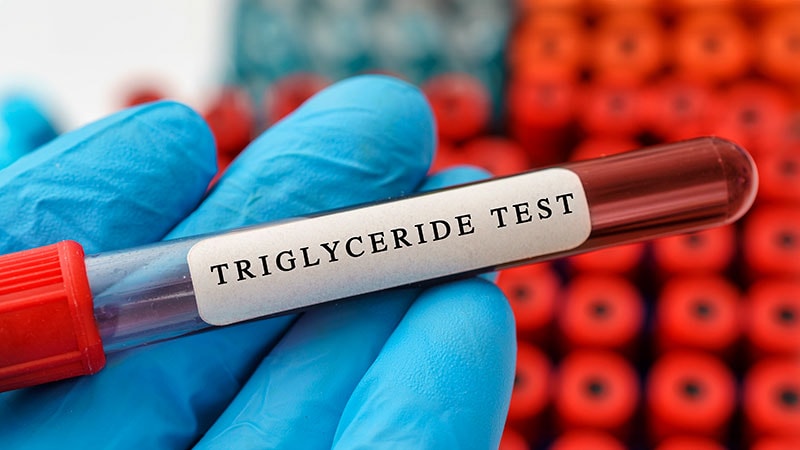insight - Pharmaceutical Drug Development - # Triglyceride Reduction with Plozasiran in Severe Hypertriglyceridemia
Investigational Drug Plozasiran Demonstrates Substantial Triglyceride Reduction in Patients with Severe Hypertriglyceridemia
Core Concepts
Plozasiran, an investigational RNA interference therapeutic, produced significant and durable reductions in triglyceride and ApoC-III levels in patients with severe hypertriglyceridemia, potentially reducing the risk of acute pancreatitis.
Abstract
The SHASTA-2 study evaluated the efficacy and safety of the investigational drug plozasiran in 229 patients with severe hypertriglyceridemia, defined as triglyceride levels above 500 mg/dL. Patients were randomly assigned to receive either plozasiran at one of three doses (10 mg, 25 mg, or 50 mg) or placebo, with two injections given on day 1 and week 12.
The primary endpoint was the change in fasting triglyceride levels from baseline to 24 weeks. Plozasiran-treated patients showed a 74% reduction in triglycerides compared to a 17% reduction in the placebo group. At 48 weeks, the average reduction was 58% in patients who received the highest doses of plozasiran, compared to 7% for those on placebo.
Over 90% of patients who received the higher doses of plozasiran (25 mg or 50 mg) saw their triglyceride levels fall below the 500 mg/dL threshold associated with acute pancreatitis risk at 24 weeks, and 77% maintained this level at 48 weeks. More than 50% of patients on higher doses achieved triglyceride levels within the normal range (below 150 mg/dL) at 24 weeks.
The drug was also associated with dose-dependent increases in HDL-C levels, but also with increases in LDL-C levels, which peaked after the second dose. The LDL-C increase was 60% in the highest dose group, but it steadily declined after 24 weeks and was not significantly different from placebo at 48 weeks.
Plozasiran was generally well-tolerated, but it was associated with a transient decline in glycemic control in patients with diabetes. The study authors noted that further investigation is needed to understand the mechanism behind the LDL-C increase and the impact on glycemic control.
Substantial Triglyceride Reduction With Plozasiran
Stats
The average triglyceride level at baseline was 900 mg/dL.
Plozasiran-treated patients showed a 74% reduction in triglycerides compared to a 17% reduction in the placebo group at 24 weeks.
At 48 weeks, the average reduction was 58% in patients who received the highest doses of plozasiran, compared to 7% for those on placebo.
Over 90% of patients who received the higher doses of plozasiran (25 mg or 50 mg) saw their triglyceride levels fall below 500 mg/dL at 24 weeks, and 77% maintained this level at 48 weeks.
More than 50% of patients on higher doses achieved triglyceride levels within the normal range (below 150 mg/dL) at 24 weeks.
The average reduction in ApoC-III was 78% for plozasiran-treated patients vs 1% for the placebo group at 24 weeks.
At 48 weeks, ApoC-III levels were reduced by 48% on average among patients receiving the highest doses of plozasiran, whereas ApoC-III levels increased 4% in the placebo group.
In the highest dose group (50 mg), the placebo-adjusted increase in LDL-C was 60%.
Quotes
"Plozasiran produced significant reductions in triglyceride levels below the threshold associated with elevated risk for pancreatitis."
"These data support the initiation of pivotal studies of plozasiran for the treatment of severe hypertriglyceridemia."
"Severe hypertriglyceridemia is a challenging condition for which few effective treatments are currently available."
Key Insights Distilled From
by at www.medscape.com 04-10-2024
https://www.medscape.com/viewarticle/substantial-triglyceride-reduction-plozasiran-2024a10006wf
Deeper Inquiries
How do the LDL-C increases observed with plozasiran compare to the effects of other triglyceride-lowering therapies, and what strategies could be employed to mitigate this potential side effect?
The LDL-C increases observed with plozasiran are a notable side effect that sets it apart from some other triglyceride-lowering therapies. While the increase in LDL-C levels with plozasiran may be concerning, it is important to note that this effect is transient and can be managed effectively. Strategies to mitigate this potential side effect could include co-administration of statins or PCSK9 inhibitors, which are known to effectively lower LDL-C levels. By combining plozasiran with these agents, the LDL-C increase could potentially be offset, maintaining a favorable lipid profile overall.
What are the potential long-term implications of the transient decline in glycemic control seen in patients with diabetes, and how can this be further investigated and addressed?
The transient decline in glycemic control seen in patients with diabetes during the study raises concerns about the long-term implications of this effect. Prolonged impairment of glycemic control can lead to complications such as hyperglycemia, which may exacerbate existing diabetes-related issues. To further investigate and address this issue, additional studies focusing on the impact of plozasiran on glycemic control in diabetic patients are warranted. Close monitoring of glycemic parameters, along with potential adjustments in diabetes management strategies, could help mitigate any adverse effects on glycemic control in the long term.
Given the different patient populations in the SHASTA-2 and olezarsen studies, how might the efficacy and safety profiles of these two ApoC-III-targeting therapies compare in a head-to-head trial, and what insights could that provide into the optimal treatment approach for severe hypertriglyceridemia?
A head-to-head trial comparing the efficacy and safety profiles of plozasiran and olezarsen in different patient populations could offer valuable insights into the optimal treatment approach for severe hypertriglyceridemia. By directly comparing these two ApoC-III-targeting therapies, researchers could assess which drug demonstrates superior triglyceride-lowering effects while minimizing adverse effects such as LDL-C increases or impacts on glycemic control. Understanding how these therapies perform in distinct patient populations could help tailor treatment strategies based on individual patient characteristics, ultimately optimizing the management of severe hypertriglyceridemia.
0
